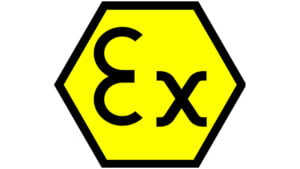When it comes to electrical installations in hazardous areas, safety is paramount. This is where the Intrinsically Safe Store comes in, providing a wide range of intrinsically safe and explosion-proof devices that adhere to stringent safety standards. In this article, we delve into the impact of hazardous area classifications on electrical installation standards. We invite you to explore our website to learn more about our products and services.
Understanding Hazardous Area Classifications
Hazardous areas are defined as locations where fire or explosion hazards may exist due to flammable gases, vapors, dust, or fibers. These areas are classified based on the nature and frequency of the potentially explosive atmosphere.
- Class I locations are where flammable gases or vapors are present.
- Class II locations are where combustible dust is present.
- Class III locations are where ignitable fibers or flyings are present.
The Role of Electrical Installation Standards
Electrical installation standards are designed to ensure safety in hazardous areas. They provide guidelines for the design, installation, and maintenance of electrical systems to prevent ignition of the surrounding explosive atmosphere.
IECEx and ATEX Standards
Two of the most recognized standards globally are the International Electrotechnical Commission System for Certification to Standards Relating to Equipment for Use in Explosive Atmospheres (IECEx) and the European Directive on Equipment and Protective Systems Intended for Use in Potentially Explosive Atmospheres (ATEX).

Impact of Hazardous Area Classifications on Electrical Installation Standards
Classifying a hazardous area significantly impacts the electrical installation standards that one must follow. These standards dictate the type of equipment you can use, how you should install it, and the maintenance procedures you must adhere to.
Equipment Selection
The classification of the hazardous area determines the type of electrical equipment that can be used. For instance, the design of equipment in a Class I location must prevent the ignition of flammable gases or vapors.
Installation Procedures
The installation procedures for electrical equipment also depend on the hazardous area classification. For example, in a Class II location, one must take measures to prevent the ignition of combustible dust.
Maintenance Procedures
Maintenance procedures are also influenced by the hazardous area classification. Regular inspections and maintenance are crucial to ensure the ongoing safety of the electrical installation.
Case Study: Intrinsically Safe Store
The Intrinsically Safe Store is a prime example of a company that understands the impact of hazardous area classifications on electrical installation standards. We offer a wide range of intrinsically safe and explosion-proof devices that meet the stringent safety standards required for hazardous areas.
Impact of Hazardous Area Classifications on Electrical Installation Standards
In conclusion, hazardous area classifications have a significant impact on electrical installation standards. They dictate the type of equipment that can be used, the installation procedures that must be followed, and the maintenance procedures that must be adhered to. By understanding these classifications and standards, companies like the Intrinsically Safe Store can provide safe and reliable solutions for hazardous areas. Contact us today to learn more about our products and services.


